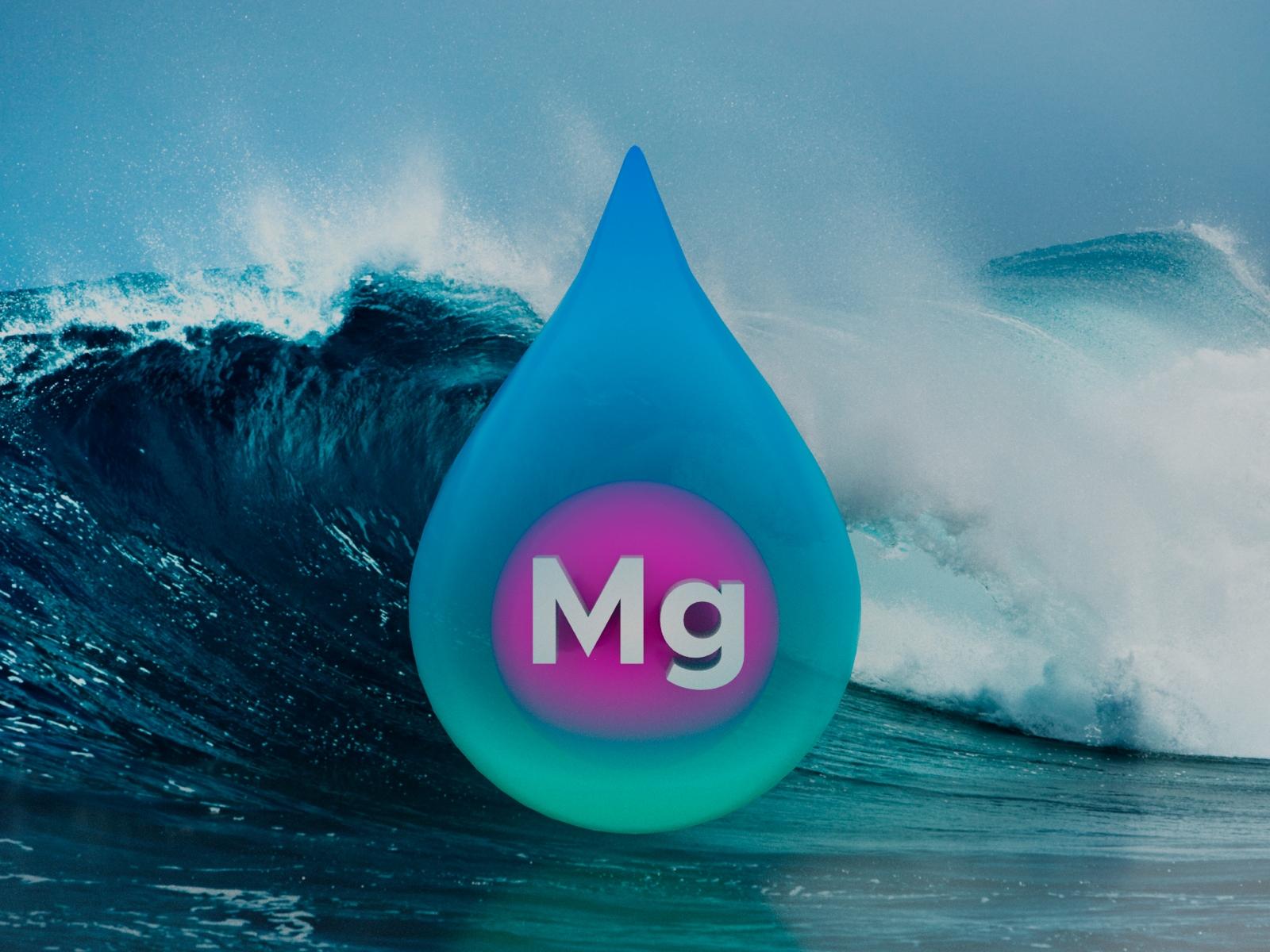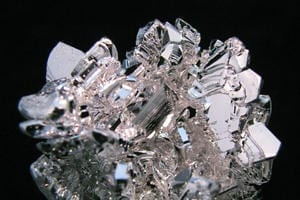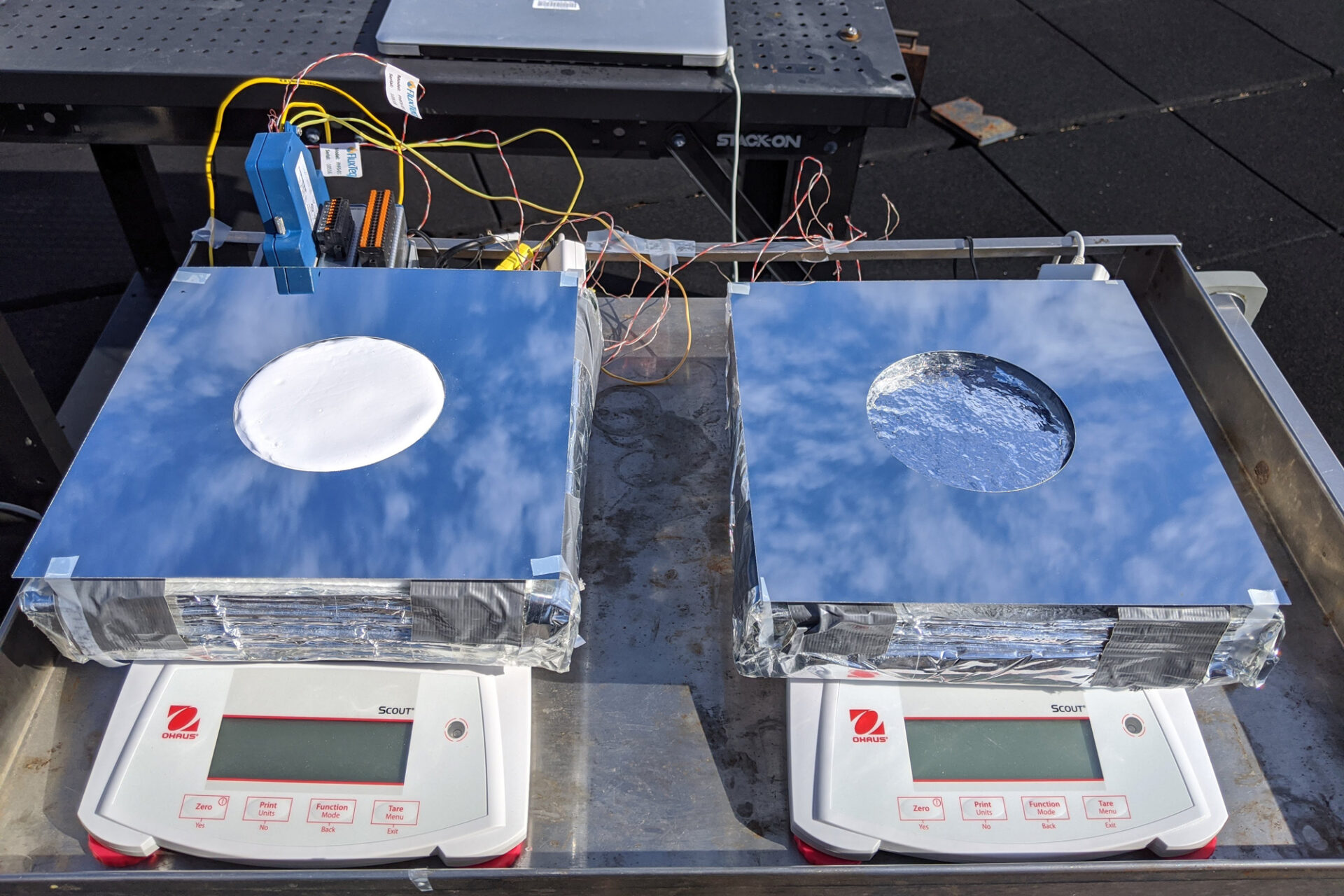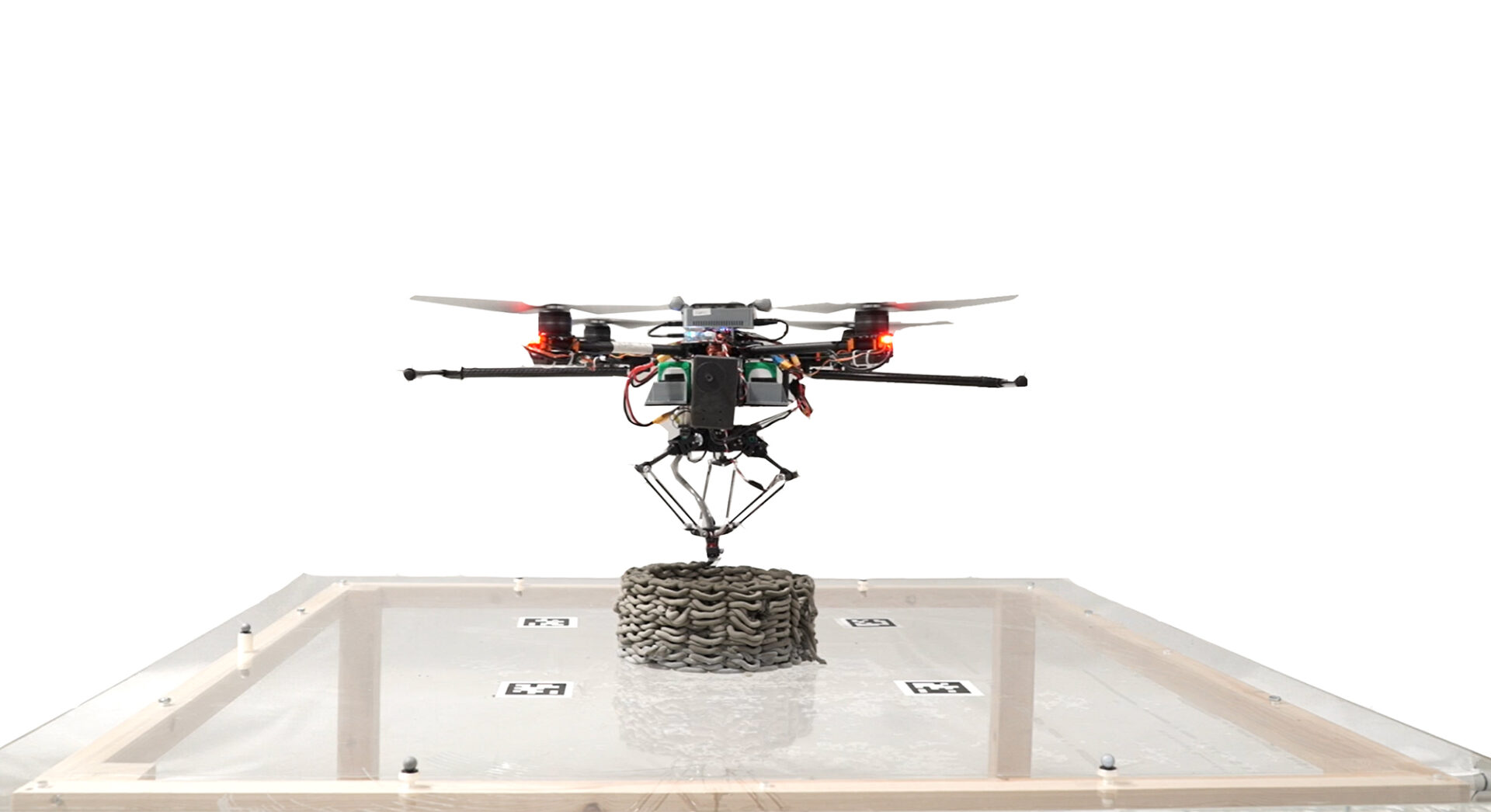
Researchers can isolate magnesium feedstocks from the ocean, important for renewable energy applications.
(Composite image by Cortland Johnson | Pacific Northwest National Laboratory)
Since ancient times, humans have extracted salts, like table salt, from the ocean. While table salt is the easiest to obtain, seawater is a rich source of different minerals, and researchers are exploring which ones they can pull from the ocean. One such mineral, magnesium, is abundant in the sea and increasingly useful on the land.
Magnesium has emerging sustainability-related applications, including in carbon capture, low-carbon cement, and potential next-generation batteries. These applications are bringing renewed attention to domestic magnesium production. Currently, magnesium is obtained in the United States through an energy-intensive process from salt lake brines, some of which are in danger due to droughts. The Department of Energy included magnesium on its recently released list of critical materials for domestic production.
A paper published in Environmental Science & Technology Letters shows how researchers at Pacific Northwest National Laboratory (PNNL) and the University of Washington (UW) have found a simple way to isolate a pure magnesium salt, a feedstock for magnesium metal, from seawater. Their new method flows two solutions side-by-side in a long stream. Called the laminar coflow method, the process takes advantage of the fact that the flowing solutions create a constantly reacting boundary. Fresh solutions flow by, never allowing the system to reach a balance.
This method plays a new trick with an old process. In the mid-20th century, chemical companies successfully created magnesium feedstock from seawater by mixing it with sodium hydroxide, commonly known as lye. The resulting magnesium hydroxide salt, which gives the antacid milk of magnesia its name, was then processed to make magnesium metal. However, the process results in a complex mixture of magnesium and calcium salts, which are hard and costly to separate. This recent work produces pure magnesium salt, enabling more efficient processing.
“Normally, people move separations research forward by developing more complicated materials,” said PNNL chemist and UW Affiliate Professor of Materials Science and Engineering Chinmayee Subban. “This work is so exciting because we’re taking a completely different approach. We found a simple process that works. When scaled, this process could help drive the renaissance of U.S. magnesium production by generating primary feedstock. We’re surrounded by a huge, blue, untapped resource.”
From Sequim water to solid salt
Subban and the team tested their new method using seawater from the PNNL-Sequim campus, allowing the researchers to take advantage of PNNL facilities across Washington State.
“As a Coastal Sciences staff member, I just called a member of our Sequim chemistry team and requested a seawater sample,” said Subban. “The next day, we had a cooler delivered to our lab in Seattle. Inside, we found cold packs and a bottle of chilled Sequim seawater.” This work represents the collaboration that can happen across PNNL’s Richland, Seattle, and Sequim campuses.
In the laminar coflow method, the researchers flow seawater alongside a solution with hydroxide. The magnesium-containing seawater quickly reacts to form a layer of solid magnesium hydroxide. This thin layer acts as a barrier to solution mixing.
“The flow process produces dramatically different results than simple solution mixing,” said PNNL postdoctoral researcher Qingpu Wang. “The initial solid magnesium hydroxide barrier prevents calcium from interacting with the hydroxide. We can selectively produce pure solid magnesium hydroxide without needing additional purification steps.”
The selectivity of this process makes it particularly powerful. Generating pure magnesium hydroxide, without any calcium contamination, allows researchers to skip energy-intensive and expensive purification steps.
Sustainability for the future
The new and gentle process has the potential to be highly sustainable. For example, the sodium hydroxide used to extract the magnesium salt can be generated on site using seawater and marine renewable energy. Removing magnesium is a necessary pre-treatment for seawater desalination. Coupling the new process with existing technologies could make it easier and cheaper to turn seawater into freshwater.
The team is particularly excited about the future of the process. Their work is the first demonstration of the laminar coflow method for selective separations. This new approach has many additional potential applications, but more work needs to be done to understand the underlying chemistry of the process. The knowledge gap offers new possibilities and research directions for powering the blue economy.
“We want to take this work from the empirical to the predictive,” said PNNL materials scientist Elias Nakouzi. “There is an exciting opportunity to develop a fundamental understanding of how this process operates while applying it to important problems like creating new energy materials and achieving selective separation of hard-to-separate ions for water treatment and resource recovery.”
Original Article: Simple Process Extracts Valuable Magnesium Salt from Seawater
More from: Pacific Northwest National Laboratory | University of Washington
The Latest Updates from Bing News
Go deeper with Bing News on:
Laminar coflow method
- 3 Accounting Methods You Need To Know In 2024
Commissions do not affect our editors' opinions or evaluations. Finding the ideal accounting method for your business can be difficult when you still need to learn the basics. The right accounting ...
- Accounting Methods: Which One is Best for Your Business?
Terms may apply to offers listed on this page. Every small business owner needs to decide which accounting method is best for their business. We’ll explain each method and help you decide which ...
- We Tried 8 Methods of Cooking Bacon and the Winner Was Hands Down the Best
Yet I’ve never had a consistent, go-to method for cooking that bacon. I’ve cooked it in a skillet and in the oven, and I’ve resorted to the microwave when I was in a hurry. I’ve read about ...
- Laminar Flow Cabinets
Vertical Laminar Flow Cabinets are self-contained laboratory workstations that are suitable for shielding samples from particle contamination. How does a Laminar Flow Cabinet work? The front face ...
- Unblocked Games Advanced Method: All You Need To Know
There are several benefits unblocked game advanced method offers to its players. Here are the most common benefits: There are different techniques players can use to unlock the unblocked games world.
Go deeper with Bing News on:
Magnesium from seawater
- 6 Potential Health Benefits of Magnesium Oxide (and How It Compares to Other Magnesium Supplements)
Although more research is needed, "there is some data to show that magnesium oxide can help when supplemented with vitamin B6 to reduce anxiety and stress in women, particularly those who have ...
- The Best Time to Take Magnesium for Maximum Absorption, According to Dietitians
For better digestion, more restful sleep and improved focus, the timing of your magnesium supplement matters. Getty Images Reviewed by Dietitian Emily Lachtrupp, M.S., RD Magnesium is one of the ...
- Can You Have Too Much Magnesium?
While rare in a person without certain chronic health conditions, you can overdose on magnesium. Symptoms can include digestive issues and respiratory distress, among others. Magnesium is a ...
- Saline solution-based method efficiently recovers critical minerals from e-waste
A method developed at the Pacific Northwest National Laboratory selectively recovers manganese, magnesium, dysprosium, and neodymium from spent electronics.
- Top 6 Best Calcium Magnesium D3 K2 Supplements in 2024
The plant-based nutrient forms, including raw algae calcium and magnesium from mineral-rich seawater, offer superior absorption. The active D3 form and all-trans K2 MK-7 are also optimal for bone ...










